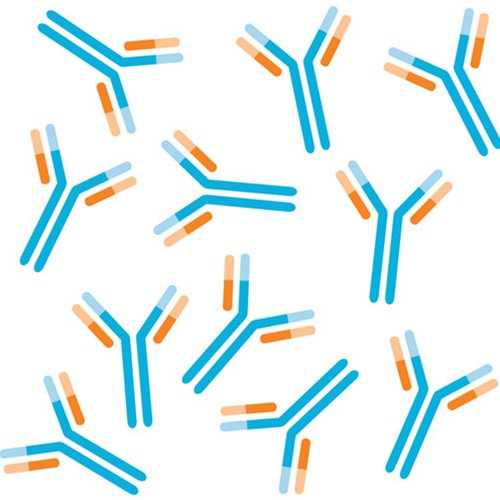Anti-Cysteine Sulfenic Acid (2-Thiodimedone) Antibody
This rabbit IgG polyclonal antibody was generated against a linear peptide corresponding to sulfenic acid modified proteins and recognizes dimedone-modified cysteine sulfenic acid formation in cells.
Highlights:
- Specific for dimedone-tagged sulfenic acid containing proteins
- Offers immunochemical method for detecting sulfenic acid
- Suitable for Western Blot and Immunofluorescence applications
The oxidation of cysteine to the sulfenic acid is often transient and difficult to detect, thus making it problematic in understanding the role that this oxidative post-translational modification plays in redox-biology and pathogenesis. This antibody was developed to detect hydrogen peroxide mediated thiol oxidation to sulfenic acid. The antibody is exquisitely specific, context-independent and capable of visualizing dimedone-modified cysteine sulfenic acid in cells.
From the laboratory of Kate Carroll, PhD, The Scripps Research Institute.
This rabbit IgG polyclonal antibody was generated against a linear peptide corresponding to sulfenic acid modified proteins and recognizes dimedone-modified cysteine sulfenic acid formation in cells.
Highlights:
- Specific for dimedone-tagged sulfenic acid containing proteins
- Offers immunochemical method for detecting sulfenic acid
- Suitable for Western Blot and Immunofluorescence applications
The oxidation of cysteine to the sulfenic acid is often transient and difficult to detect, thus making it problematic in understanding the role that this oxidative post-translational modification plays in redox-biology and pathogenesis. This antibody was developed to detect hydrogen peroxide mediated thiol oxidation to sulfenic acid. The antibody is exquisitely specific, context-independent and capable of visualizing dimedone-modified cysteine sulfenic acid in cells.
From the laboratory of Kate Carroll, PhD, The Scripps Research Institute.
| Product Type: | Antibody |
| Antigen: | 2-Thiodimedone |
| Molecular Weight: | Pan antibody smear is expected |
| Isotype: | IgG |
| Clonality: | Polyclonal |
| Immunogen: | Linear peptide corresponding to sulfenic acid modified proteins |
| Species Immunized: | Rabbit |
| Epitope: | 2-Thiodimedone |
| Purification Method: | Unpurified serum |
| Tested Applications: | WB (1:1000), IF |
| Storage: | Stable for 1 year at -80C from date of receipt. 1-month after dilution in in WB buffer (containing 3-5% BSA, 0.01% NaN3) |
| Shipped: | Dry ice |
- Seo YH, Carroll KS. Profiling protein thiol oxidation in tumor cells using sulfenic acid-specific antibodies. Proc. Natl. Acad. Sci. USA 2009; 106:1616316168
- Perkins A, Tudorica DA, Amieva MR, Remington SJ, Guillemin K. Helicobacter pylori senses bleach (HOCl) as a chemoattractant using a cytosolic chemoreceptor. PLoS Biol. 2019;17(8):e3000395. Published 2019 Aug 29. View article
If you publish research with this product, please let us know so we can cite your paper.


